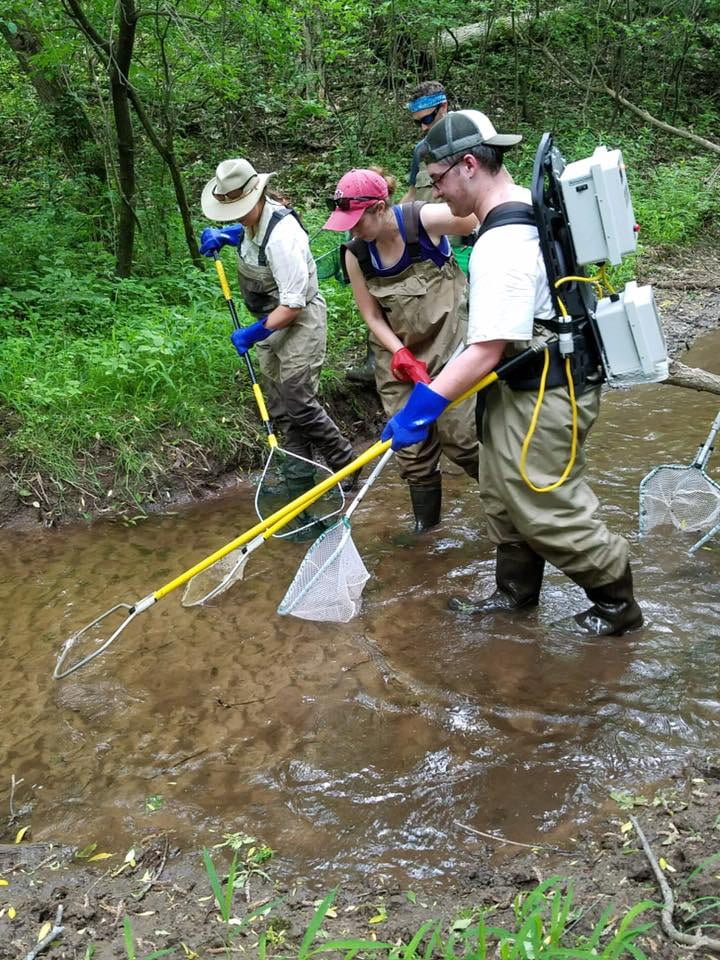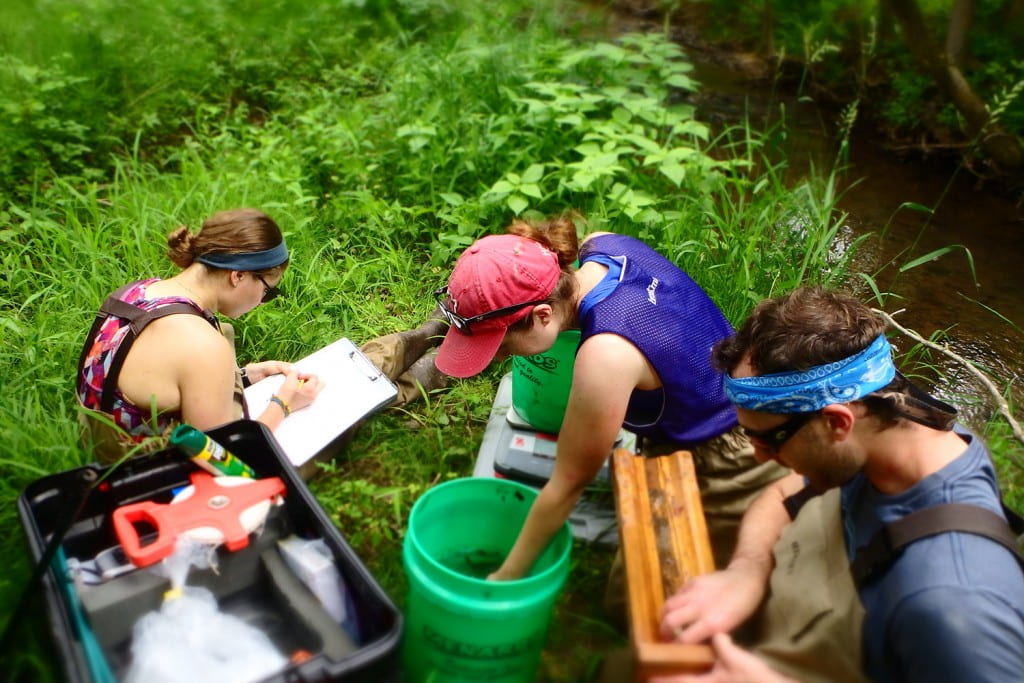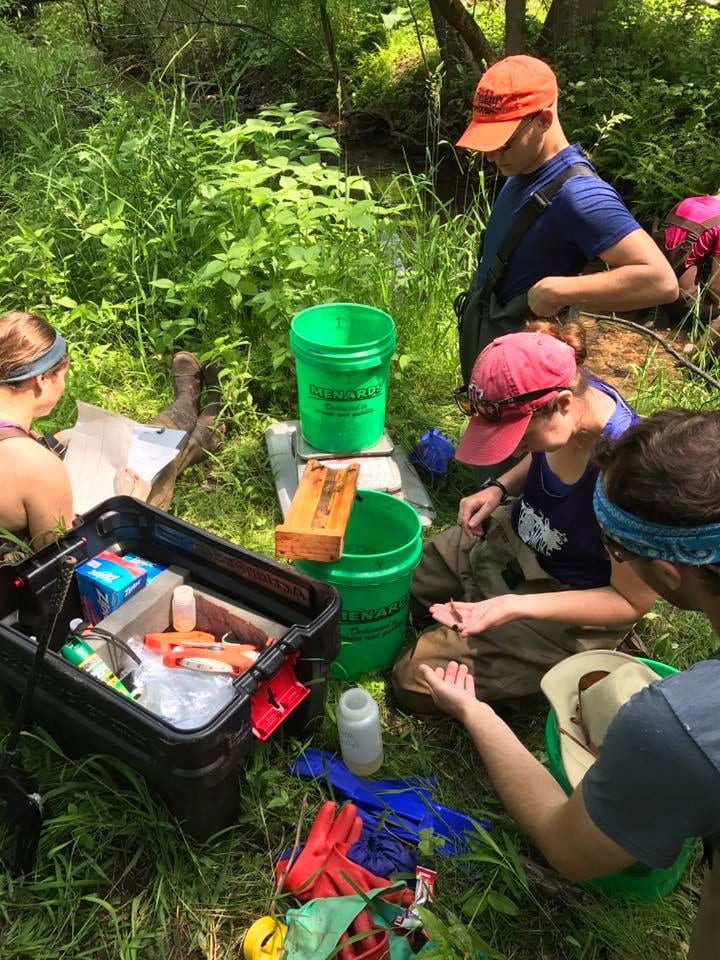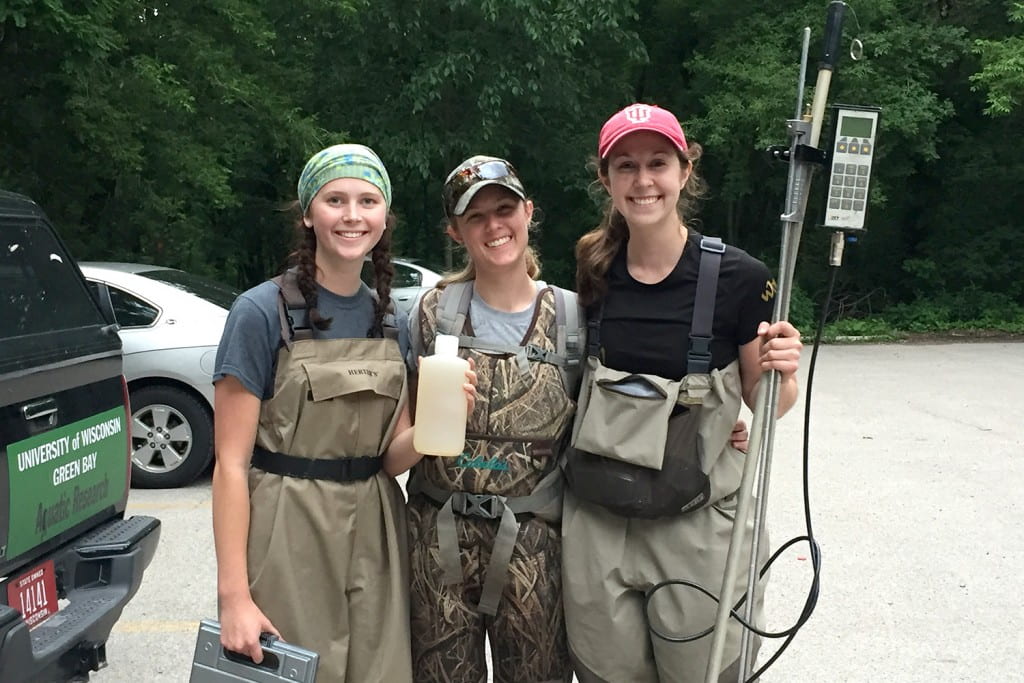UW-Green Bay graduate students counted on to study habitat and plan for restoration

Green Bay and its local tributaries offer some of the best outdoor lab facilities imaginable for future biologists. And the research students perform can inform decisions in restoration and bay health for years to come.
This summer members of UW-Green Bay’s Aquatic Ecology and Fisheries Lab have been active in local streams, using an electrofishing method to study different aspects of fish communities in small tributaries of Green Bay. Graduate student Cindy Nau (Environmental Science and Policy) is mapping fish species’ distributions and habitat use at a fine scale over large areas of several streams to see what types of habitat are used by stream fish. By sampling fish along a large habitat gradient, she will show how stream habitat changes with distance from the bay, what species commonly co-occur, and aquatic areas preferred by a range of native and invasive fish species.
Graduate student Mia McReynolds (Environmental Science and Policy) is using her research to describe aquatic macroinvertebrate and fish communities across a set of tributaries. Her goal is to relate biological community structure and function to abiotic factors like water quality, stream habitat and broad-scale land use in the watershed. Both projects are funded by the Lower Fox River/Green Bay Natural Resource Damage Assessment (NRDA), under the direction of UW-Green Bay Associate Professor Patrick Forsythe. Their work will inform potential future stream restoration efforts. The projects are unique because they investigate a set of small tributaries around Green Bay that are relatively understudied (few studies around the Great Lakes have investigated small tributaries as a functional set, according to McReynolds). Through their research, McReynolds and Nau will detail biological communities, abiotic factors (agricultural run-off), and in-stream habitat (fallen logs providing cover) of the tributaries.
Shocking Mahon Creek
Backpack electrofishing in Mahon Creek. Fish are temporarily stunned by a low-voltage current, then collected, measured and released.
Recording fish measurements
After electrofishing a 100-meter reach of Mahon Creek on the UW-Green Bay campus as part of Mia’s project, fish were measured and weighed before being released back into the creek.
Juvenile Northern Pike
Several juvenile northern pike have been found in the study streams, an encouraging sign that native sport fish may use these tributaries as nurseries and spawning areas.
Shocking at the mouth of Sugar Creek
The UW-Green Bay team at Sugar Creek County Park (Door County), begins to sample just inside the stream’s mouth. Green Bay is just behind them beyond the sandbar. About 650 individual fish were measured in a kilometer of stream!
Water quality testing at Baird Creek
Students had their work cut out for them at Baird Creek near campus. They measured stream flow, analyzed samples in the lab (dissolved nutrients and sediment load) and used handheld probes to measure water quality in the field (dissolved oxygen, temperature, conductivity, pH).
Monitoring larval fish communities
 In addition to the stream surveys, Nau is also looking at the larval fish communities of seven small tributaries of Green Bay.
In addition to the stream surveys, Nau is also looking at the larval fish communities of seven small tributaries of Green Bay.
She uses larval light traps to assess what fish species are using these areas as nursery habitat and how the species composition changes over the course of the summer. To the right is a photo is of a larval light trap ready to be deployed. The glow stick acts as a lure that some fish species are attracted too and they become trapped as they swim toward the light.
Wequiock Creek wetlands larval fish sample
 The above photo is of a sample taken from a light trap in Wequiock Creek’s wetland at Point au Sable. Everything you see with eyeballs is a larval fish (probably white suckers).
The above photo is of a sample taken from a light trap in Wequiock Creek’s wetland at Point au Sable. Everything you see with eyeballs is a larval fish (probably white suckers).
Setting a light trap at Mahon Creek at sunset
One of the larval fish survey technicians setting a light trap at Mahon Creek at sunset.
— photos submitted by Mia McReynolds and Cindy Nau












